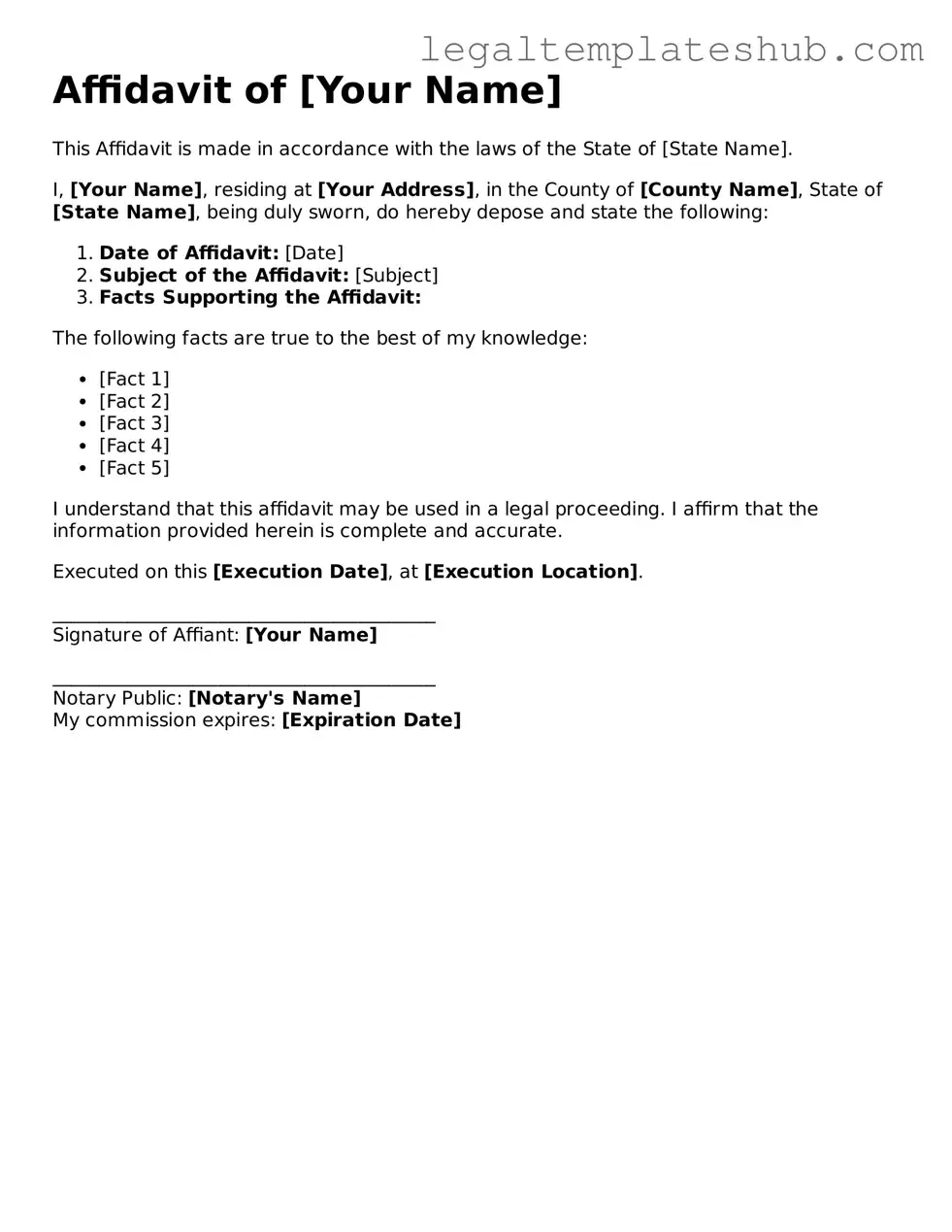Printable Affidavit Template
An affidavit is a written statement made under oath, often used as evidence in legal proceedings. This document serves to affirm the truthfulness of the information contained within it, providing a sworn account of facts relevant to a case. To get started on your affidavit, click the button below to fill out the form.
Access Editor
